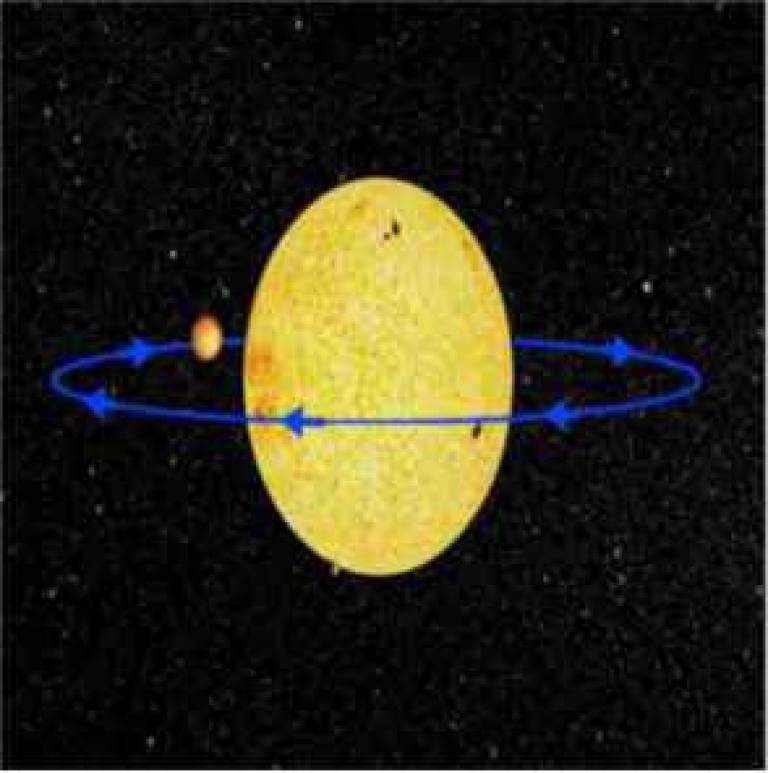Astronomers unveil atmospheres of far-away planets
17 February 2010
Press release Links:
 nature.com/" target="_self">Nature
nature.com/" target="_self">Nature
The discovery and characterisation of a planet with an Earth-like atmosphere is a step closer thanks to a new observation technique, developed by astronomers at NASA and UCL, using small ground-based telescopes.
Published today in Nature, astronomers have identified organic molecules in the atmosphere of a Jupiter-sized planet nearly 63 light years away. Rather than using a high performance space telescope, like Hubble, they have made the breakthrough using a relatively small 30-year-old telescope in Hawaii.
The surprising new finding was made using NASA's Infrared Telescope Facility on Mauna Kea, Hawaii - a 3-metre diameter telescope that ranks just 40th among ground-based instruments.
The new technique promises to speed up the work of studying planet atmospheres by enabling many other ground-based telescopes to focus on known exoplanets - planets that orbit stars beyond our solar system.
"The final goal is to observe the atmosphere of a planet with the capability to support life. We're not there yet, but this technique will make it much easier and faster to characterise exoplanet atmospheres," said Dr Giovanna Tinetti, co-author of the study at UCL Physics and Astronomy.
"This work suggests we may be able to detect organic molecules in the atmospheres of terrestrial planets with existing instruments very soon," said Dr Mark Swain, astronomer at NASA's Jet Propulsion Laboratory in Pasadena, California, and lead author of the paper.
The next step is to set up synergies between ground telescopes and NASA's Hubble, Spitzer and future James Webb space telescopes, in order to maximise information gathering with a view to fully characterising the atmospheres of other exoplanets. In the study, the astronomers were able to confirm the presence of water, carbon dioxide and methane in the atmosphere of a planet called HD 189733b in the constellation of Vulpecula. The new technique decomposes light emitted by the planet to get a spectrum, or signature, of the different chemicals present in the planet's atmosphere.
Giovanna Tinetti added: "This technique allows us to get a much more accurate picture of the chemicals present in the atmosphere of exoplanets, and has shown that there are some emissions in the atmosphere of this planet which are indicative of 'non-thermal processes' - very complex relationships between the distribution of energy over wavelengths and the temperature of an object.
"These processes have been observed in the atmospheres of few planets in our solar system, but have never been seen before in the atmosphere of an exoplanet."
The work was carried out with funding from NASA's Office of Space Science in Washington, D.C. The NASA Infrared Telescope Facility is managed by the University of Hawaii's Institute for Astronomy. JPL is managed by the California Institute of Technology for NASA. Giovanna Tinetti is currently a Royal Society University Research Fellow.
Media contact: Clare Ryan
Image: This artist concept shows the planetary system called HD 189733, located 63 light-years away in the constellation Velpecula. Credit: NASA/JPL-Caltech
 Close
Close

